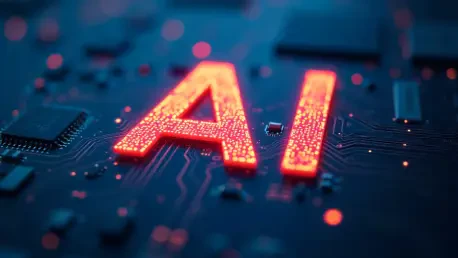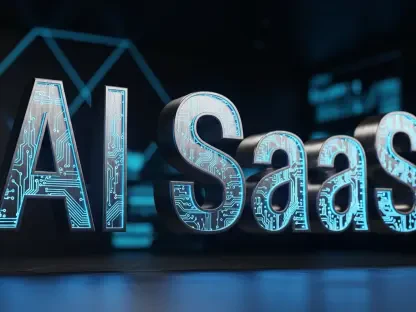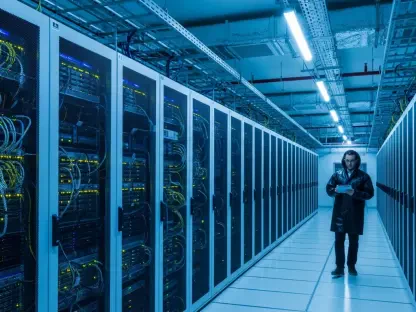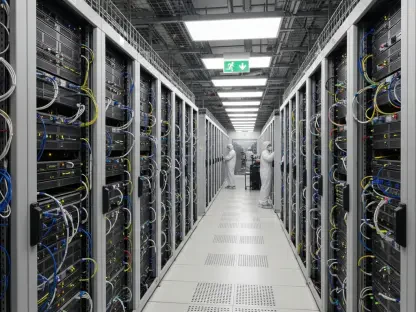What if the very software designed to assist in daily tasks could entirely take over a job role? This isn’t a distant fantasy but a reality unfolding in 2025, where artificial intelligence (AI) is transforming from a supportive tool into a direct substitute for human labor, with profound implications for the future of work. With the U.S. labor market valued at a staggering $13 trillion—dwarfing the $300 billion software-as-a-service (SaaS) industry—the implications of this shift are nothing short of revolutionary. Businesses, workers, and policymakers stand at the precipice of an economic upheaval driven by AI agents that don’t just streamline processes but execute them end-to-end.
This transformation represents a monumental pivot in how value is created and captured across industries. The potential to automate vast swaths of labor isn’t merely about efficiency; it’s about redefining the foundation of work itself, targeting a market opportunity that could reshape global economies. As AI continues to evolve, the urgency to understand and adapt to this trillion-dollar shift becomes paramount for anyone invested in the future of business and employment.
What If Software Replaced Human Jobs?
Consider a logistics company struggling with fluctuating demand and rising labor costs. In 2025, an AI agent steps in, negotiating freight loads over the phone with human-like precision, slashing expenses and boosting consistency. This isn’t science fiction but a glimpse into how AI is directly challenging traditional roles. The scale of this change is immense, with software no longer just organizing data but performing tasks that once required human judgment and interaction.
The economic stakes are staggering when comparing the $13 trillion U.S. labor market to the relatively modest $300 billion SaaS sector. AI’s ability to target labor-intensive roles means that entire industries could see their cost structures and operational models upended. From customer service to compliance management, the question isn’t whether software can do the job—it’s how quickly it will.
This shift sparks both opportunity and uncertainty. While businesses stand to gain from reduced overhead and improved scalability, the displacement of human workers raises critical questions about job security and economic equity. The reality of software as a labor substitute is already here, demanding attention from all corners of society.
Why AI’s Role Demands Immediate Focus
AI’s growing influence in labor and software markets isn’t a sudden phenomenon but a culmination of decades of technological progress. Software once digitized manual processes, enhancing human efficiency without replacing it. Now, AI marks a decisive leap, moving from passive support to active execution, addressing pressing challenges like labor shortages and cost pressures in a way that previous innovations couldn’t.
This urgency is amplified by current economic trends, where businesses face unprecedented demands for efficiency and adaptability. With labor costs rising and skilled workers in short supply, AI offers a solution that can scale rapidly across sectors. The technology’s ability to tackle a multi-trillion-dollar market makes it a focal point for executives aiming to stay competitive in an increasingly automated landscape.
Policymakers, too, must grapple with the implications of this shift. Balancing economic growth with workforce stability requires proactive measures to address potential disruptions. As AI reshapes the boundaries of work, ignoring its trajectory is no longer an option for any stakeholder in the modern economy.
Dual Forces: AI’s Impact on Labor and Software Industries
AI is driving a twin revolution, simultaneously transforming labor markets and upending traditional software models. On one front, AI agents are automating complete workflows, such as freight negotiations handled by tools like HappyRobot or multilingual collections managed by Salient. These examples highlight how technology can replace human effort in specific, high-value tasks, tapping into the $13 trillion U.S. labor market with unprecedented precision.
On the other front, the SaaS industry faces disruption as AI challenges conventional structures like seat-based pricing. When a single AI agent can perform the work of thousands of human agents, per-user fees become obsolete, pushing companies toward outcome-based revenue models. This shift not only redefines how software is sold but also creates entirely new business categories that prioritize results over subscriptions.
The combined effect of these forces is profound, optimizing existing operations while unlocking markets previously constrained by human limitations. Small enterprises, for instance, can now access enterprise-grade solutions at a fraction of the cost, leveling the playing field. The dual impact of AI signals a fundamental rethinking of economic value, with software poised to capture labor’s territory on a massive scale.
Insights from the Edge: Expert Views and Real Cases
Voices from the forefront of innovation underscore the scale of AI’s potential. General Partner Alex Rampell, speaking at a recent industry summit, captured this shift succinctly: “Out pops software that does the job of labor.” This perspective crystallizes the transition from software as a tool to a direct competitor with human workers, highlighting a seismic change in business paradigms.
Real-world applications bring this vision to life. Portfolio companies under a16z’s umbrella demonstrate AI’s reach, from automating repetitive administrative tasks to navigating complex regulatory landscapes. Take a small retailer leveraging AI for multilingual customer support—a service once reserved for large corporations—now accessible at minimal cost, illustrating how technology democratizes capability across market segments.
These examples make the trillion-dollar impact tangible. Picture a startup using AI to manage compliance hurdles that would typically require a dedicated legal team. Such scenarios reveal how AI not only cuts costs but also empowers smaller players to compete on a global stage, reinforcing expert assertions that this technology is rewriting the rules of economic engagement.
Adapting to Change: Strategies for Businesses and Workers
Navigating an AI-driven economy requires actionable strategies for both enterprises and individuals. Businesses should start by pinpointing tasks ripe for automation, integrating AI agents to handle repetitive or scalable operations. Transitioning to outcome-based pricing models can align costs with results, ensuring sustainability as traditional revenue structures falter in the face of AI’s efficiency.
Workers, meanwhile, must pivot toward skills that remain uniquely human, such as creativity, empathy, and strategic thinking. Upskilling in AI-related fields—whether through coding, data analysis, or system oversight—offers a pathway to relevance in an automated landscape. Educational programs and corporate training initiatives can bridge the gap, equipping individuals to thrive alongside intelligent systems.
Small businesses, often constrained by labor shortages, can harness AI to overcome barriers like language differences or regulatory demands. By adopting affordable AI tools for customer service or compliance, these entities can punch above their weight, accessing markets previously out of reach. A deliberate approach to integration ensures that all stakeholders can adapt to a future where software increasingly shoulders the burden of labor.
Reflecting on a Transformative Era
Looking back, the rapid ascent of AI in 2025 marked a turning point in how society understood work and value. Businesses that embraced automation gained a competitive edge, while workers who adapted to complementary roles found new opportunities amidst change. The trillion-dollar shift in labor and software markets became a defining chapter in economic history, revealing both the promise and complexity of technological progress.
As this era unfolded, the focus shifted toward sustainable integration. Stakeholders began prioritizing frameworks that balanced innovation with social stability, ensuring that AI’s benefits reached beyond corporate balance sheets. Discussions around policy and education grew louder, aiming to safeguard human contributions in an automated world.
Moving forward, the challenge lies in scaling these solutions thoughtfully. Collaborative efforts between industries, governments, and communities can shape a future where technology amplifies human potential rather than diminishing it. Embracing this dual path of innovation and responsibility offers the best chance to navigate the profound changes AI has set in motion.









